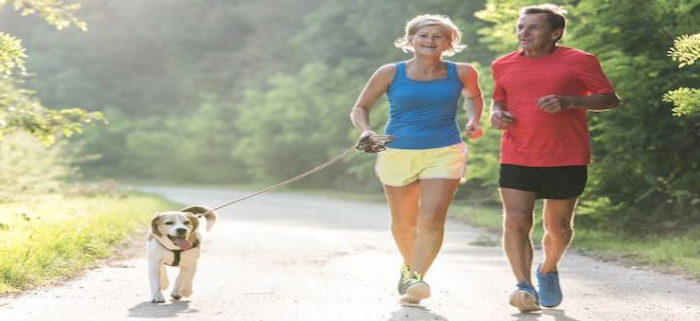“Do you think it’s possible for a little girl to fly?”
In 1970, Coach Béla Károlyi asked this question to the young girl who was sitting silently behind her school desk. With a fire blazing behind her eyes, she stared back at him and answered his question with a nod of her head. He replied, “So do I!”
As we write this, Michael Phelps is making Olympic history by becoming the greatest Olympian who ever lived. Over three decades ago, another Olympian made history by demonstrating that what was previously believed to be impossible was in reality quite possible.
Most of us may never feel the weight of a gold medal hanging on around our necks and hear the thundering applause of a gracious and reverent crowd. Yet, in each of us is the heart of a champion. The only difference between those who allow their inner champion to fully express itself and those who live vicariously through the accomplishments of others is a decision. Champions are champions because they think, act and therefore perform as champions. The moment you decide to step out of the stands and into the arena, you are a champion.
Greatness leaves clues. Out of the seeds of greatness come the distinguishing fruits of character, the clues that are left behind by every inspiring achievement so that it can be built upon. Within every achievement is the blueprint that, when studied, enables us to not only replicate preceding accomplishments but reach those goals we set for ourselves even higher.
You must emulate that which you desire to become. With another Olympic games recently behind us, we thought it was appropriate to share with you the six qualities of a champion we have observed over the years in the top performing trainers, managers and professionals worthy of emulation. How better to do that than through the story of one of the greatest Olympians who ever lived, an individual who overcame her own adversity, so that she might help others to break free from the limits of their own.
Quality #1 – The Courage to Imagine the Unimaginable
Nearly six years later at the 1976 Montreal Olympic Games, this young girl, Nadia Comăneci, performed her legendary gymnastic routine. Her body effortlessly danced through the air in harmonious movement while she flipped, turned and flew from one uneven bar to the next. The sheer beauty, elegance and fluidity with which she performed her routine looked as if she was breaking the bonds of gravity as she soared above the ground and, in fact, looked like a little girl flying.
Nadia completed her final somersaults and landed with her two feet planted firmly on the ground. Her head was held down at first. Slowly she lifted her torso, then her head and then fully extended her arms towards the sky while staring with intensity into the layers of spectators. The hundreds of spectators from every country on the globe jumped out of their seats while clapping and cheering with praise for the performance they had just witnessed.
The judges handed in the final scores. The crowd waited silently as they stared at the scoreboard. The lights lit up on the board as 1.00. Only one? The crowd was confused, as this was the lowest score possible. Then a voice from the loud speaker said, “There seems to be a problem. The judges are conferring, one moment please…. Yes! Yes it is!!! For the first time in the Modern Olympic Games, a perfect 10.00!”
The scoreboard was only set for three digits and did not have enough spots to display the four digits of 10.00. Nadia made Olympic Gymnastic History by changing what was considered at the time by the masses to be impossible. She was the first gymnast in history to score a perfect 10.00.
Nadia was a girl no more that six years old turning cartwheels in the schoolyards of Romania when asked if she believed it possible for a little girl to fly. She was found as a carefree little girl who believed she could accomplish the unimaginable. “Many never experience breaking the bonds and flying because they lack the courage to believe beyond what others suggest as possible,” said Nadia. “The lack of courage to break boundaries is not a consequence of cowardice but rather conformity. Just as the numbers on a scoreboard were set based on what others felt at one time to be possible, it also suggested the limits to which others should conform as well.”
Conformity is following a script for your life that you did not write. If you have ever heard that quiet yet persistent voice in the back of your head telling you that you can do more then has been realized, if you have ever had a feeling that you were capable of far more than has been demonstrated in your life so far or have seen yourself going further then others thought possible, this by itself could be evidence of the fact that you were meant to break through the bonds and fly.
Quality #2 – Decide to Be a Champion… No Matter What!
At one of Nadia’s first performances, before her perfect 10 was accomplished, many had hopes to watch this young girl perform her routine at a gymnastic competition. Coach Károlyi had promised everyone she would be a future champion for the Romanian team. He instructed Nadia to “perform exactly as you did in practice, and don’t let us down.” If Nadia performed as she demonstrated in practice, she would succeed.
Nadia slowly walked over to the balance beam. She stared over the balance beam not with her usual fire but with hesitancy for what she was she was supposed to do, with a look of fear from the expectations set by others. Nadia proceeded with her routine and fell several times off the balance beam. Many looked on with disbelief and disappointment. Was this was the young girl who was promised to be a champion?
All too often many of us stand in our own way of making our dreams and goals come to fruition not because of who we think we are, but rather, who we think we’re not.
On the trip back from the competition, Nadia stared out of the window of the bus in the back seat. Bela sat next to her and said, “The tragedy is not that you fell. It was that you were the best and didn’t live up to it! You’re not serious about gymnastics! You should quit! Did you ever see anyone as bad as you were today? Go back to the schoolyards where you came from!”
“NO!” Nadia yelled back at him. “I WANT TO BE A CHAMPION!”
Quality #3 – Keep the Company of Other Champions
How many times have you fallen? How many times have you missed that one step and stumbled? Nadia had within her the talent to be a legendary gymnast. At no more 13 years of age, Nadia was told she was a champion and yet she still fell. And not just once but several times. How many of us know we have more within us but yet continually fall short of our fullest potential? As a result, we never truly allow our talents and gifts to be harnessed. Nadia was surrounded by people who believed in her. Coach Károlyi believed Nadia had the potential for greatness and expected nothing less. It was this uncompromising belief in Nadia’s potential that was perhaps one of the strongest determinants in her success.
Your reference group is one of the most powerful determinants of your success in any area of your life. We all have the potential to be champions and break the norms of what is believed to be possible. It takes just one person who unconditionally believes in your abilities to help you become more than your personal history.
Look at three people in your life who you share most of your time and thoughts with and ask the following questions:
- What are the words they say to you? Do they believe you are remarkable?
- Do they continually point it out your unique talents?
- Does your reference group allow you to stay where you are, or do they continually push you to go were you were meant to be?
- Do they stay quiet when you fall back, or do they not accept anything less than your best? How do they communicate this to you?
- Do they question you as a person, or do they question the behaviors, decisions and actions you take that aren’t consistent with your highest potential?
Your reference group is one of the most important things in your life because they have the ability to shape and define who and what you become. Think hard about the above questions. Every day you are at work in your club or business setting ask yourself:
- Who do I choose to spend my time with at work? Is this consistent with who I aspire to be as a professional?
- Do the people I surround myself with continually discuss new ideas and thoughts?
- Are the people in my reference group at work attending seminars and pursuing continual education and professional development?
- Are the people I talk to positive, or do they consistently complain about all that is wrong? What you allow to be put in to your mind can eventually shape your thoughts as well.
- Do I surround myself with the best in my club (or whatever environment you work in)? People/Clients/Members notice everything. Even when you think it is not important, they see who you talk to and how you spend your time at the club and use this as a determinant when choosing a trainer.
- Is my reference group at work supportive of my success, or do they feel comfortable when I don’t succeed at a task or goal? Competition and threat are two totally different things. Healthy competition can help in boosting your potential while those who are threatened by your success might seek to pull you down.
Quality #4 – Self Reliance
After making Olympic history by achieving a perfect 10, Nadia lived her life growing up in the eyes of society. She was always referred to as the champion, the legend and the best. She was constantly being watched, judged and criticized by the masses. The story of the champion comes with greatness, and with greatness comes adversity. It is the challenge that leads you further towards your unrealized potential. The potential would never had been known if the challenge had never been experienced.
Nadia was separated from her family and coach. She was sent to another team and coach. In her separation from the familiar support group she had for many years, her life shifted. She gained weight, was mocked by her team and lost her best friend in feuds of jealousy. Nadia was alone for the first time in her life. She was used to a structure, a support group and voice believing in her and setting the parameters with which she lived. When she was without this, she had nothing left but time by herself. Nadia was isolated to her room by her new coaches and given strict orders to not see visitors so she could focus on gymnastics and lose the weight she had gained.
In her room alone, Nadia was forced to think, reflect and question. Her ego kicked in. The ego is the dark, shadowy side of us that wants to believe we are capable of not being loved by anyone. The ego keeps us in shame, guilt and confusion about our true identity. The ego keeps us resistant to telling the truth, and then uses our internal and external display of honesty to breed fear in our hearts. Nadia attempted to end the silence and fear by self destructing behaviors and attempted suicide.
Quality #5 – Perseverance
In her hospital bed during her recovery from attempted suicide, Nadia was told to leave gymnastics and lead a simple life. “Take walks,” they said, “Get a job and start a family.” Nadia could not do it. She responded, “I must be the best! I must train harder than I have ever done before!”
The difference for champions is they go one more round. Regardless of how many times you are “down,” you are not beaten if you rise to your feet just one more time. Nadia went back to Bela. She trained harder then ever. She ran miles, trained intensely and restricted her diet to lose the weight.
On your journey through life, there will perhaps be many experiences, roles and environments that will contribute to who you are. There will also be times where the patterns that have made you succeed in the past may be futile in the future. Because change is constant, you must have the ability to be flexible in your environment. Always have the ability to hear different opinions and viewpoints and adapt to different patterns to lead to the same result you desire. The professional who does not have the ability to adapt and change is the professional who will stay in one place and eventually be obsolete.
As you grow and move towards your goal, always have the ability to:
- Stay true to your values and beliefs.
- Stay aware of your strengths and weaknesses.
- Be aware of your “why” in the industry and the contribution you wish to make.
- Always have the ability to be flexible enough to learn and be open minded to change your patterns and adapt to new environments, all leading to the goal you desire.
Life can move fast when we are on a rise towards greatness. Because of this, we might look back and not realize how we got there. We question the accomplishments we make, the praises we receive, and we fear the next step. One night during her training, Nadia ran to the kitchen and grabbed some food to secretly take back to her room and eat. Bela ran in to her room, grabbed her, threw her over his shoulder and took her back to the kitchen. As he was throwing food at her, he screamed, “Can’t stand the pressure of being a star? Do you want to self destruct so no one will recognize you? Don’t know what to do when the going gets rough? From now on Nadia, it is up to you. You can’t depend on me anymore. I will teach you what to do, but I can’t make you do it, and I won’t do it for you!”
Quality #6 – Re-imagine
At the 1979 World Gymnastic Championships, after rigorously training, Nadia was to perform once again after many years in hopes of regaining her crown and leading the Romanian team to victory. However, she was suffering a wrist injury which she had never attended to in her past weeks of training. Bela angrily looked at her and said, “You are no use to us like this.” Nadia was taken out of the competition.
Nadia stood outside the arena as she listened to the judges announcing the scores of her teammates and competitors. Her one-time best friend, the one who had turned on her in jealousy during Nadia’s times of glory, now walked over to her and said, “Nadia, gymnastics has changed. We are the ones who changed it. What was once special is now ordinary. Nadia, I am sorry. I am sorry for being jealous. You deserved all of your wings.”
We fall and we get up, and perhaps we fall again. Each of these experiences can teach us more about ourselves. You learn a little and then put it in to practice. There is always more for you to learn, but after a while, you notice that what you are practicing no longer works. That’s the blessing. It does not allow you to stagnate. It forces you to grow, and grow some more. In order to grow, we must work and continue to work. It is the work we must do on ourselves in order to experience our greatness that makes it so challenging.
Nadia walked back in to the arena, took off her jacket and said, “I will compete.” Bela stared at her and said, “I can’t let you do that.” “What do we need to win?” Nadia asked. The response was, “9.9.” Nadia stared at Bela and said, “I understand now. I can do it on my own.”
Nadia walked with confidence over to the balance beam. The crowd looked on with excitement at her on the gymnasium floor as her name was announced over the loud speaker. She stared over the balance beam. This was a place she had been before. This is where she began, yet this time it was different after all of the years of trials, glories, defeats and struggles. This time, Nadia stood staring over the balance beam with a confidence that came from within her, a confidence that was not based on the beliefs of others.
Nadia believed she could do this routine magnificently because she was doing it. She performed her routine on the balance beam with a badly injured wrist. The judges and spectators watched silently, remembering the last time they had witnessed this performance. Her movements were beautiful. Her presence was magnificent.
Champions are champions because they have within them the ability to realize their inherent talents. The greatest blessing one can have is the realization that it is not a circumstance, company, role or another person that helps to develop a talent. It is the realization that the talent was, is and and always will be within you.
Nadia completed her final somersaults and landed with her two feet planted firmly on the ground. Her head was held down at first. Slowly she lifted her torso, then her head and then fully extended her arms towards the sky while staring with intensity into the layers of spectators.
The judges announced the score “9.95.” They won the championship.
“And in the end of all of our exploring, will be to arrive where we started, and know the place for the first time.” – T.S Elliot









